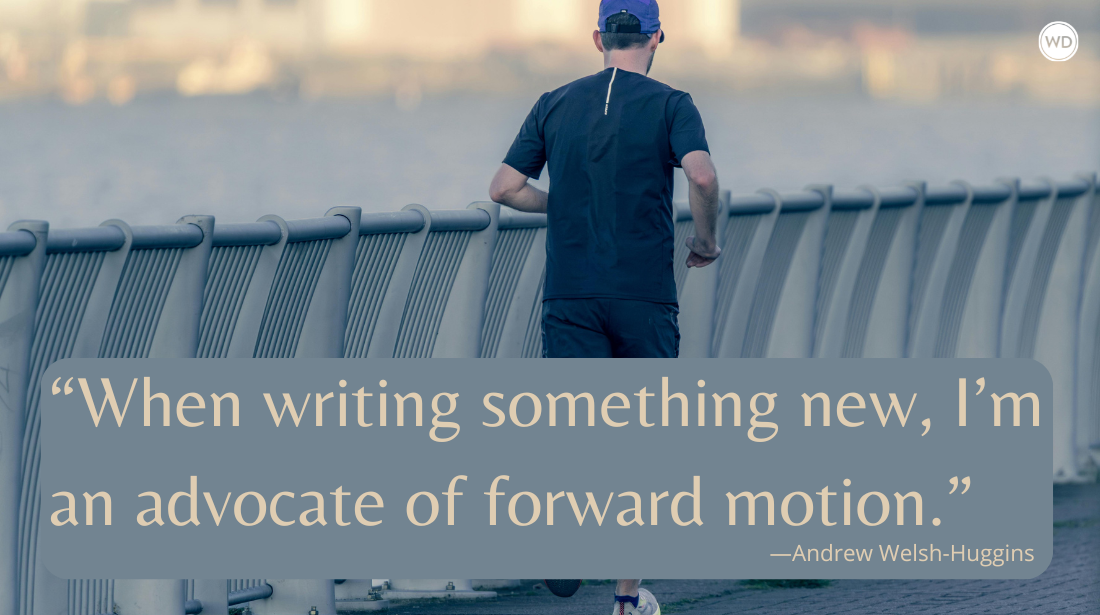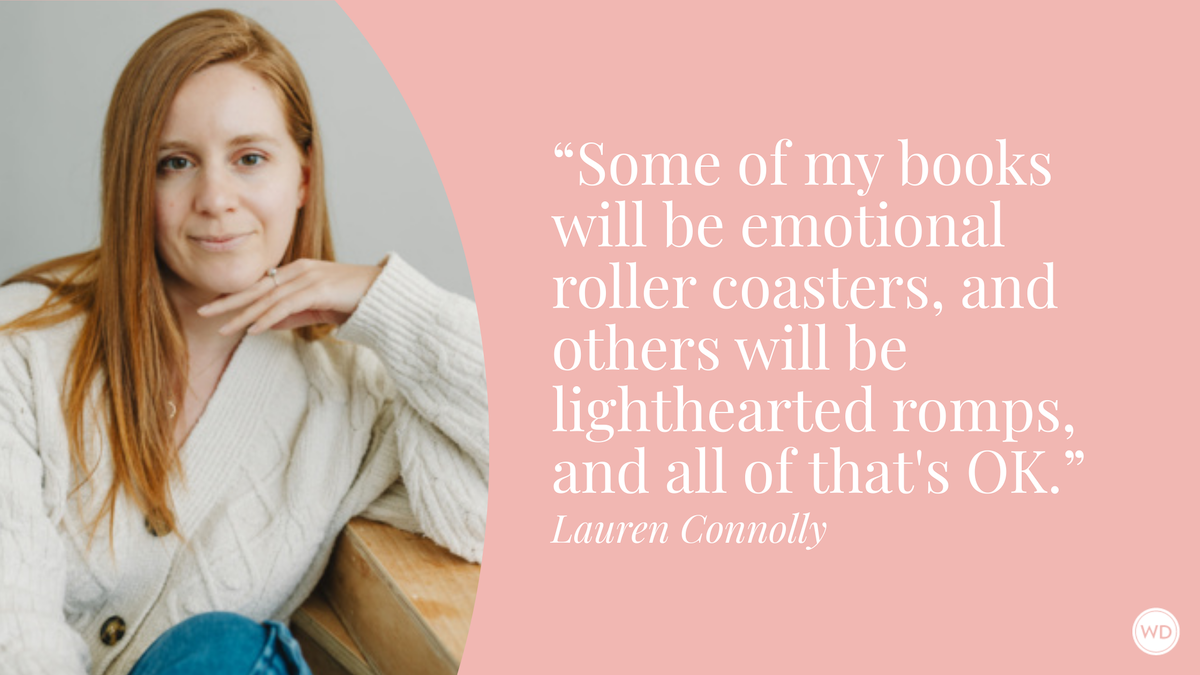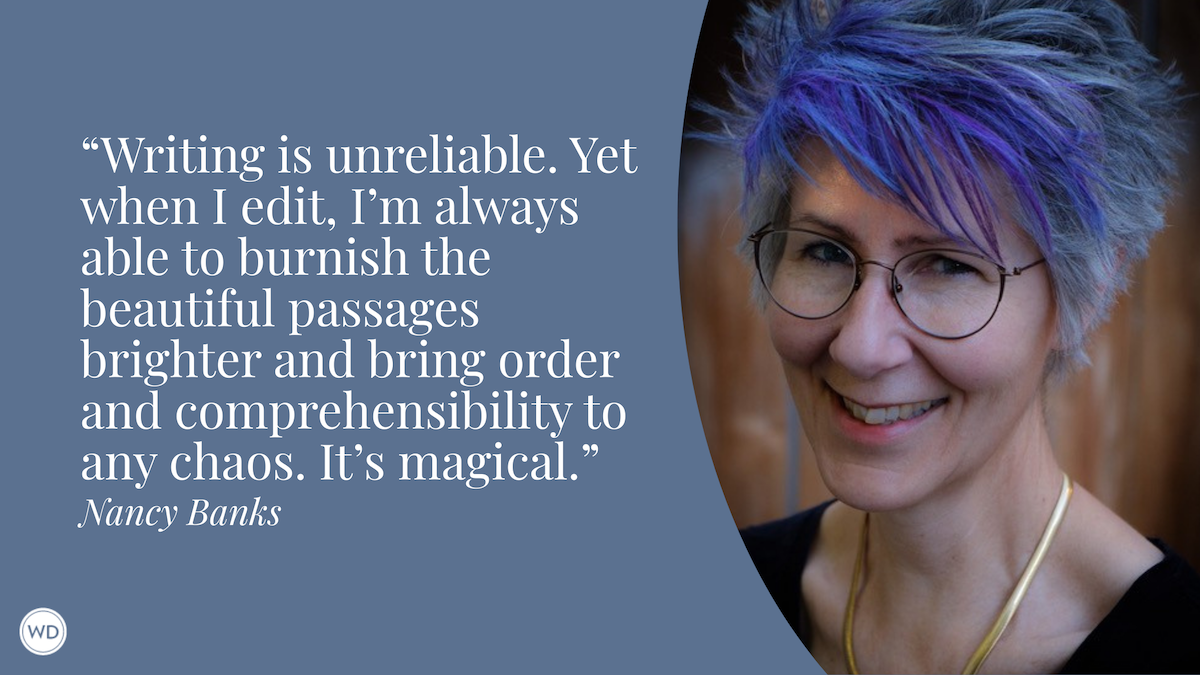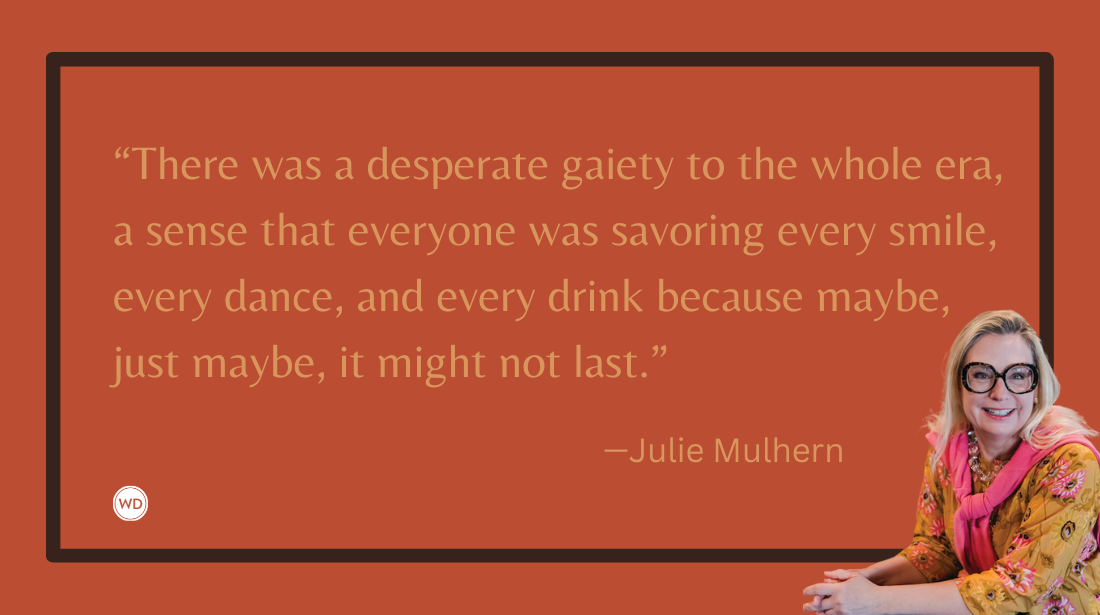The 5 Biggest Fiction Writing Mistakes (& How to Fix Them)
Start your revision by addressing these five biggest fiction writing mistakes, and you’ll immediately change your story for the better.
The best fiction writers write like they’re in love—and edit like they’re in charge.
First drafting should be a wild and wonderful ride, full of discovery, dreams and promises. But at some point you have to settle down and make the book really work. You need to approach your manuscript with sober objectivity and knowledge of the craft.
Having reviewed hundreds of manuscripts over the years, I’ve identified the five mistakes that most regularly turn up. Start your revision by addressing these, and you’ll immediately change your story for the better.
*****
*****
1. Happy People in Happy Land
Chief among the most common problems, in first chapters especially, are scenes presenting characters who are perfectly happy in their ordinary worlds. The writer thinks that by showing nice people doing nice things, readers will care about these pleasant folk when the characters are finally hit with a problem.
But readers actually engage with plot via trouble, threat, change or challenge. I call the first hint of this the opening disturbance. It can be stunning, as in Jodi Picoult’s Lone Wolf, which begins:
Seconds before our truck slams into the tree, I remember the first time I tried to save a life.
Or it can be something quieter, a single item that is off kilter, as in the opening of Sarah Pekkanen’s The Opposite of Me:
As I pulled open the heavy glass door of Richards, Dunne & Krantz and walked down the long hallway toward the executive offices, I noticed a light was on up ahead.
Lights were never on this early.
Although Happy People most commonly appear in Chapter 1, that doesn’t mean you can let your guard down once you’ve opened with a bang. As your novel progresses, look out for stops in Happy Land.
While revising my novel Don’t Leave Me, I noticed a scene in which my protagonist, Chuck Samson, a teacher recovering from his wife’s death, goes with his autistic brother to a colleague’s apartment for dinner. The host, knowing that Chuck used to do magic when his wife was alive, asks him to do a trick. Chuck resists but is cajoled into it. In the original version he performed a disappearing knife trick successfully, and everyone was pleased until the cops arrived at the door at the end of the scene.
I decided this was too happy. In my published version, Chuck blows it:
… the knife slid off his lap and hit the floor with a clank.
“Oops,” Stan said.
Chuck had not blown that trick in twenty years. He looked at his hands like they were foreign objects that had betrayed him.
Wendy laughed good naturedly. But when Chuck looked at her, she stopped laughing.
Trouble is your business. Make more of it.
2. A World Without Fear
The best novels, the ones that stay with you all the way to the end—and beyond—have the threat of death hanging over every scene.
Death? Really? Even, say, category romances?
Stay with me.
Death comes in three forms. Physical death is a staple of the thriller, of course. But there’s also professional death, where the main character is engaged in a vocation and the particular matter at hand threatens that position: A cop assigned a case that may mean the end of his career. A married politician falling for a young staffer. A devoted mother losing the child she loves to drugs. Your job, if it’s vocational death overhanging your novel, is to make whatever problem the protagonist is facing feel so important that failing to overcome it will mean a permanent setback to his main role in life.
There’s also psychological death (“dying on the inside”), most often emphasized in character-driven fiction. This is where the romance genre comes in. It has to seem as if the lovers must end up together or their lives will forever be less than what they could have been.
Regardless of which form you use, you must put death on the line so fear may be felt throughout. Fear is a continuum—it can be simple worry or outright terror. You can put it everywhere. And you should.
In the pulp classic The Red Scarf by Gil Brewer, the main character’s schemes are closing in around him (as usually happens in noir). His wife is trying to have a normal dinner with him. But he’s worried:
“Come on and eat, Roy. Supper’s ready.”
“All right.” I went into the kitchen and sat down and stared at my plate. I didn’t want to eat. There was this rotten black feeling all through me and I couldn’t shake it.
“Eat something, Roy. What’s the matter?”
“Nothing. I just don’t feel so hot.”
I wanted to go over and take this guy Radan and knock the hell out of him. Only I knew I wouldn’t. You know when it’s not ready. You know something’s going to happen.
Something had to happen. It was like before a big storm, with the black clouds out there on the horizon. Everything goes calm and dead, and then …
Once the story is underway, scenes where fear isn’t present in some form mean the stakes are not high enough or the characters aren’t acting the way they should in the face of death.
3. Marshmallow Dialogue
Dialogue is the fastest way to improve a manuscript—or to sink it. When agents, editors or readers see crisp, tension-filled dialogue, they gain confidence in the writer’s ability. But dialogue that is sodden and undistinguished (marshmallow dialogue) has the opposite effect.
Pro dialogue is compressed. Marshmallow dialogue is puffy.
Pro dialogue has conflict. Marshmallow dialogue is overly sweet.
Pro dialogue sounds different for each character. Marshmallow dialogue blends together.
Fortunately, the fixes are simple.
First, make sure you can “hear” every character in a distinct voice. A great way to do this is to create a voice journal: a free-form document written in a character’s voice, talking to you, the author, on a variety of topics. Develop these documents until each character sounds unique, and then apply what you’ve learned to your manuscript.
Second, compress your dialogue as much as possible, cutting fluffy words, whole lines or even entire exchanges. Here’s an example:
“Mary, are you angry with me?” John asked.
“You’re damn straight I’m mad at you,” Mary said.
“But why? You’ve got absolutely no reason to be!”
“Oh but I do, I do. And you can see it in my face, can’t you?”
The alternative:
“You angry with me?” John asked.
“Damn straight,” Mary said.
“You got no reason to be!”
Mary felt her hands curling into fists.
Try this: Copy a lengthy dialogue exchange into a fresh document. Then cut and compress as much as you can. Compare it to the original. Nine times out of 10 you’ll prefer all or part of the new version.
Finally, when writing dialogue be sure to include some sort of tension in every exchange. Remember fear? At the very least you can have some aspect of it (worry, anxiety, fright) going on inside one of the characters so that communication is partially impaired. Try playing up the different agendas each character has in a scene. Let them use dialogue as a weapon to get what they want.
4. Predictability
Readers like to worry about characters in crisis. They want to tremble about what’s around the next corner (whether it’s emotional or physical). If a reader knows what’s coming, and then it does in fact come, the worry factor is blown. Your novel no longer conveys a fictive dream but a dull ride down familiar streets.
The fix is simple: Put something unexpected in every scene. Doing this one thing keeps the reader on edge.
So how do you come up with the unexpected? Try making lists. Pause and ask yourself what might happen next, and list the possibilities, centering on three primary areas: description, action, and dialogue. For each one, don’t choose the first thing that comes to mind (which usually amounts to cliches). Force yourself to list at least five alternatives.
Description: Dump generic details for ones unique to the character’s perceptions. How might he see a room where someone died? What’s one surprising thing about the wallpaper? The bed? The closet?
Action: Close your eyes and watch your scene unfold. Let the characters improvise. What are some outlandish things that could result? If something looks interesting, find a way to justify it.
Dialogue: Don’t always use “on-the-nose” exchanges. How might characters say things that put other characters (and thus, readers) off balance? Consider Clarice Starling’s first conversation with Hannibal Lecter in The Silence of the Lambs. Clarice begins:
“I think you’ve been destructive. For me it’s the same thing.”
“Evil’s just destructive? Then storms are evil, if it’s just that simple. And we have fire, and then there’s hail. Underwriters lump it all under ‘Acts of God.’”
“Deliberate–”
“I collect church collapses, recreationally. Did you see the recent one in Sicily?”
You can make these lists in your planning stages, just before writing a scene, and/or when you revise. Either way, the unexpected elements that result will perceptibly elevate the quality of your story.
5. Lost Love
As I said upfront, writing a book is like falling in love. Outlining and planning are the wooing. Drafting the novel is your commitment to marriage (which would make the opening scenes the honeymoon). But at some point, you and your book will likely need some marriage counseling. Because when you lose the verve for your material, it shows.
So how do you regain lost love? The surest way is by going deeper into your characters.
Start with backstory. Maybe you’ve already done an extensive bio for your main character. Try starting a new one. Keep the best of the old material, but put in plenty that’s new.
Focus on the year your character turned 16. Create an account of what happened at that crucial stage. What incident shaped her? What romances, heartaches, tragedies? Write those scenes in detail.
Do this for your antagonist, too, and your secondary characters. Soon enough you’ll be excited to get back to your story.
Also, try focusing on what your protagonist yearns for. We yearn because we feel a lack, a need, a hole in our souls. So yearning is about connection. This, in fact, is the power of mythology, some of the best storytelling of all time. Joseph Campbell taught that myths were a way of gaining connection to something transcendent, a life source, an essential mystery.
Readers, too, yearn for connection—with stories they can get lost in and be moved by. Fix these five areas in your work, and your books can be among them.
James Scott Bell is the #1 bestselling author of Plot & Structure, and award-winning thrillers like Final Witness. He served as fiction columnist for Writer’s Digest magazine, to which he frequently contributes, and has written three additional craft books for Writer’s Digest Books including Revision & Self-Editing, The Art of War for Writers and Conflict & Suspense. Follow him on Twitter @jamesscottbell.









